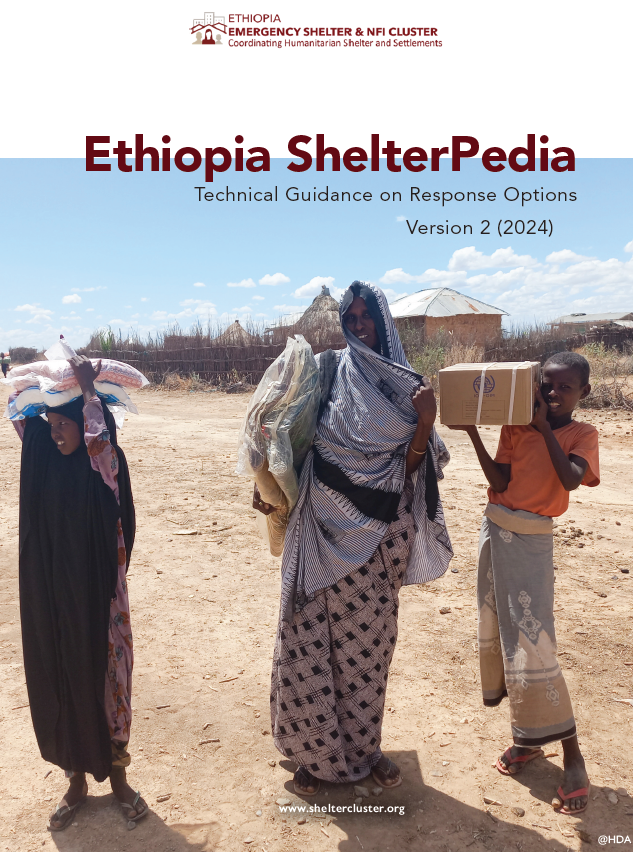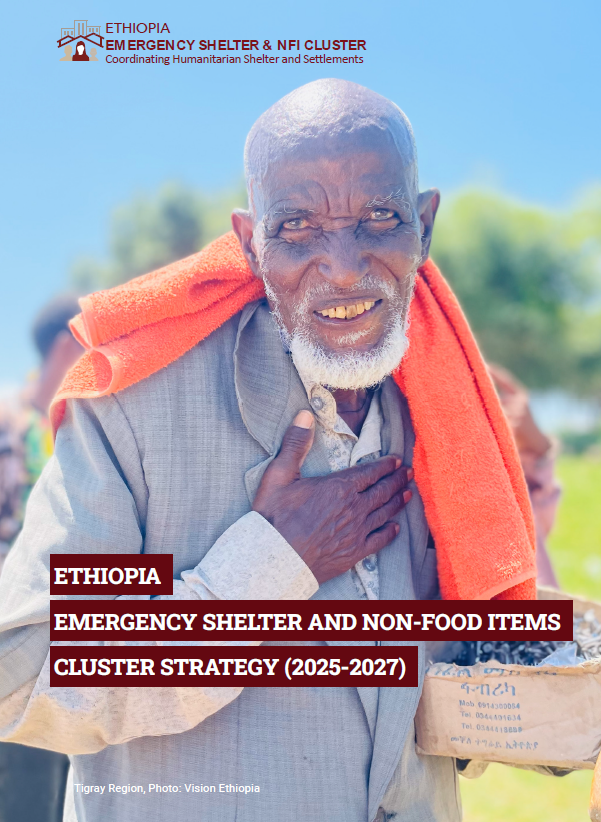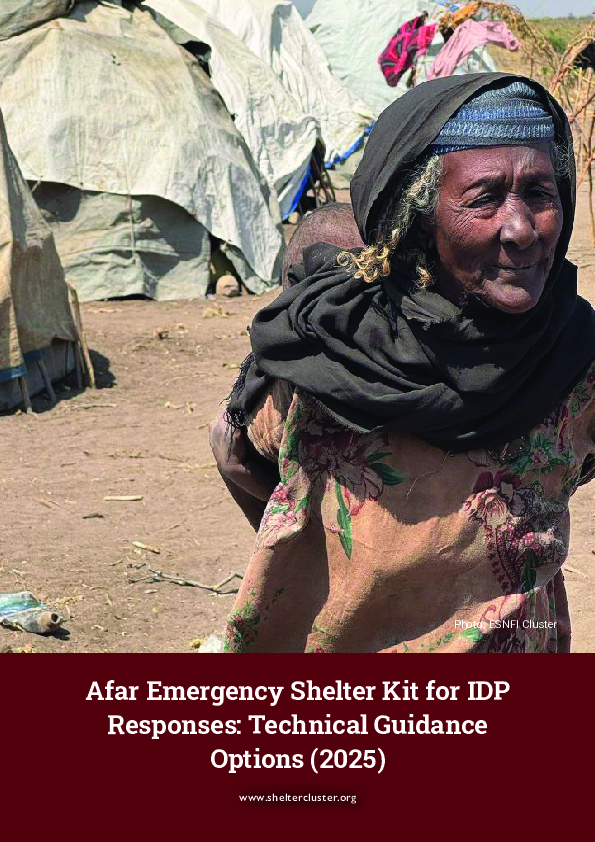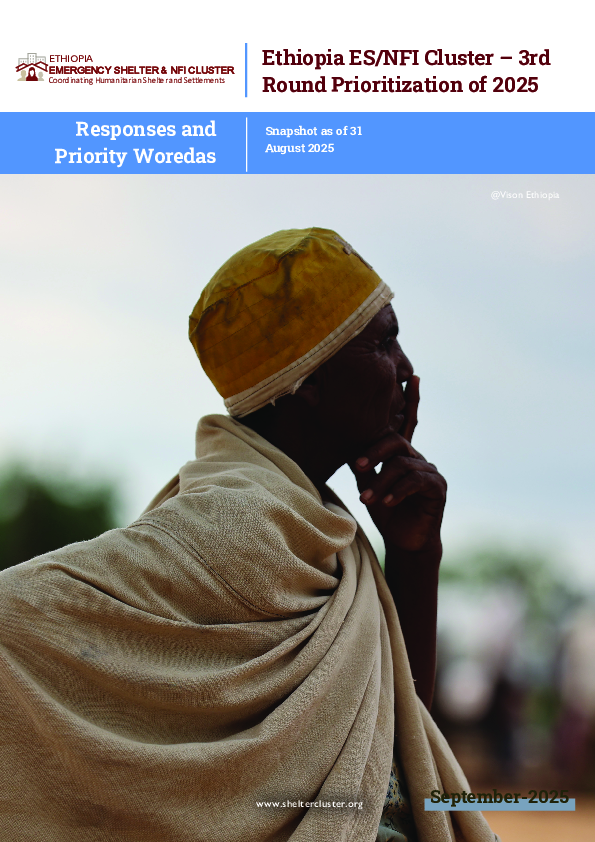Ethiopia
Featured Documents
Overview
In November 2025, ES/NFI operations scaled up significantly through coordinated partner efforts and improved pipeline mobilization. Completed distributions formed the bulk of the response, delivering large volumes of ES/NFI kits, household items, and emergency shelter materials, while ongoing distributions and pipeline stocks are expected to further expand coverage. Despite strong coordination supported by the Common Pipeline Request Tracking System, insecurity and earthquake-affected areas experienced delays and gaps. By month’s end, 18% of the annual target of 2.1 million people had been reached, with an additional 9% covered through ongoing activities, leaving a 73% gap—approximately 1.5 million people still in need.
Funding shortfalls remained the main constraint, with total ES/NFI funding at USD 25.3 million. OCHA-EHF accounted for 56.8% of resources, followed by the US Embassy (12.2%), ECHO (7%), and ICRC (6.6%), while contributions from 10 other donors brought the top donor group to over 99% of the funding envelope. Despite this engagement, the cluster faces a 75% funding gap, limiting scale-up, pre-positioning, and response to new displacement. Increased donor support is critical to closing these gaps and sustaining assistance. Meanwhile, planning for 2026 is underway, with first-round prioritization aimed at targeting the most urgent and underserved needs.




